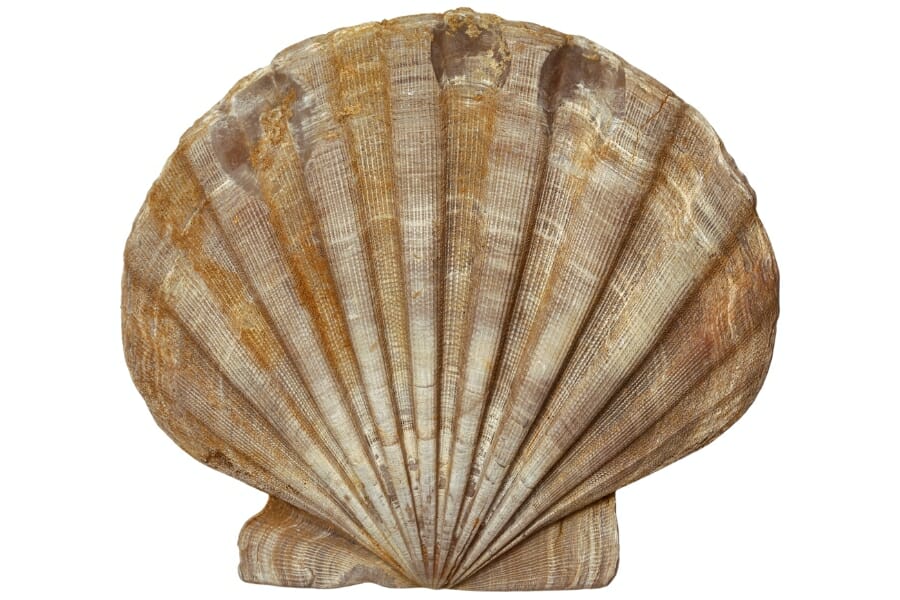Fossil hunters will find Virginia to be like a treasure chest and you don’t have to be a scientist to join in the fun. You can find many exciting things, like fossilized shark teeth and hundreds of millions of years old plants.
In the state, you only have to walk on the beach or up a mountain trail to find fossils. But it’s much more fun knowing what to look for and where so we’re going to give you a lot of great locations where you can find Virginia fossils.
Each fossil shows what life was like a very, very long time ago. For example, shark teeth can tell us what kinds of food these predators ate, and fossilized plants can tell us about the climate and environment of Virginia in the past.
Also, it’s hard to beat the thrill of finding something buried for millions of years. It’s like being a detective and going back in time simultaneously!
The Fossils Of Virginia You Can Find
People who are interested in fossils will love Virginia. It has a lot of fossils that are very ancient and help you go back in time. Even bones from reptiles and birds that lived a long time ago, which are less likely to be found, could be fossilized here.
We’ve also created a complete guide to rockhounding in Virginia to learn more about the interesting rocks and minerals here.
- The extensive local experience and understanding of our team
- Input from multiple local fossil hunters and fossil groups
- The accessibility of the various locations
- Safety and potential hazards when collecting
- Private and public locations
- A desire to include locations for both experienced fossil lovers and those who are just starting out
Using these weights we think we’ve put together the best list out there for those who love finding great new fossils for our collections!
Common Virginia Fossils
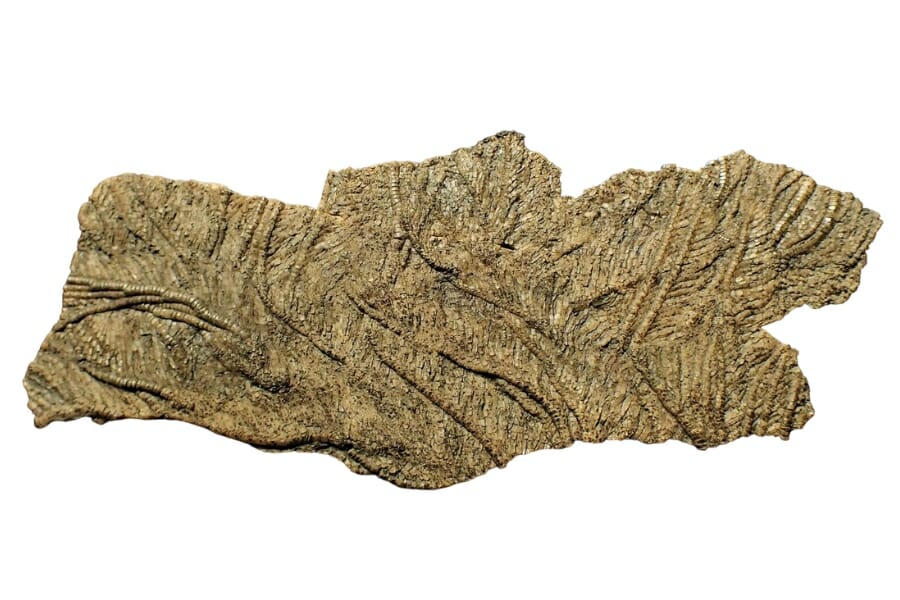
There are a lot of different kinds of fossils in Virginia. Here are some of the most common fossils in the state:
- Crinoids
- Echinoderms
- Fish fossils
- Marine invertebrates
- Mollusks
- Plant fossils
Virginia State Fossil – Chesapecten jeffersonius
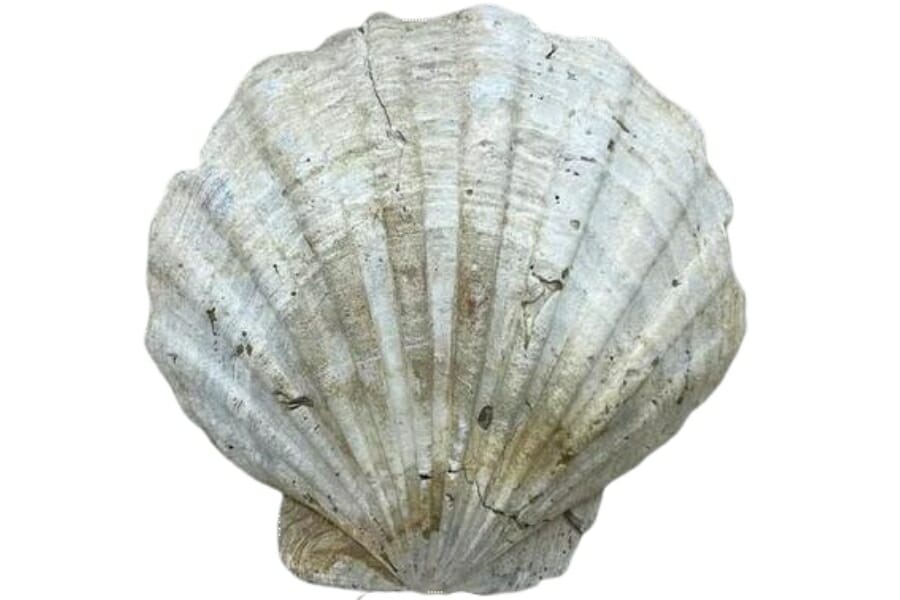
The Chesapecten jeffersonius is the state fossil of Virginia. It’s a type of scallop that used to live about 4 to 5 million years ago but is now extinct. These fossils are often found on the shores of the York and James rivers and the Chesapeake Bay.
With their ribbed shells, these fossils show us what Virginia’s oceans were like long ago. Not only do amateur fossil hunters love to find them, but scientists also use them to learn about past ecosystems.
Rare State Fossils
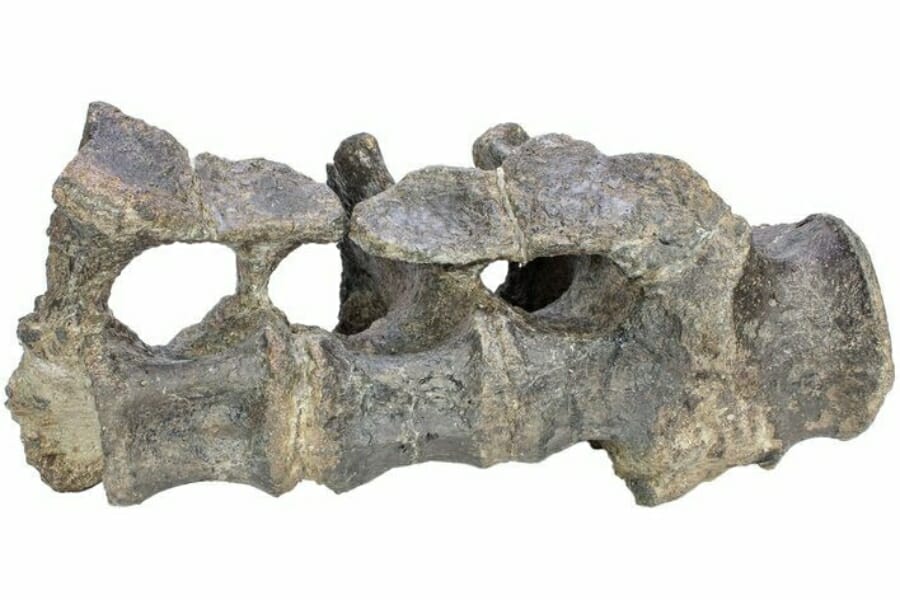
Here’s a list of some rare and valuable fossils found in Virginia. As you look around, keep an eye out for the following fossils:
- Bird Fossils
- Dinosaur Fossils
- Feathered Fossils
- Mammal Megafauna
- Marine Reptiles
The Best Places To Find Fossils In Virginia
We’ll talk about the best places to look for fossils in Virginia. We’ll focus on what we think are the best options, even though there are many. You’ll have a great time visiting these places and finding remarkable rocks and minerals.
Always Confirm Access and Collection Rules!
Before heading out to any of the locations on our list you need to confirm access requirements and collection rules for both public and private locations directly with the location. We haven’t personally verified every location and the access requirements and collection rules often change without notice.
Many of the locations we mention will not allow collecting but are still great places for those who love to find beautiful rocks and minerals in the wild without keeping them. We also can’t guarantee you will find anything in these locations since they are constantly changing.
Always get updated information directly from the source ahead of time to ensure responsible rockhounding. If you want even more current options it’s always a good idea to contact local rock and mineral clubs and groups
Catawba Valley
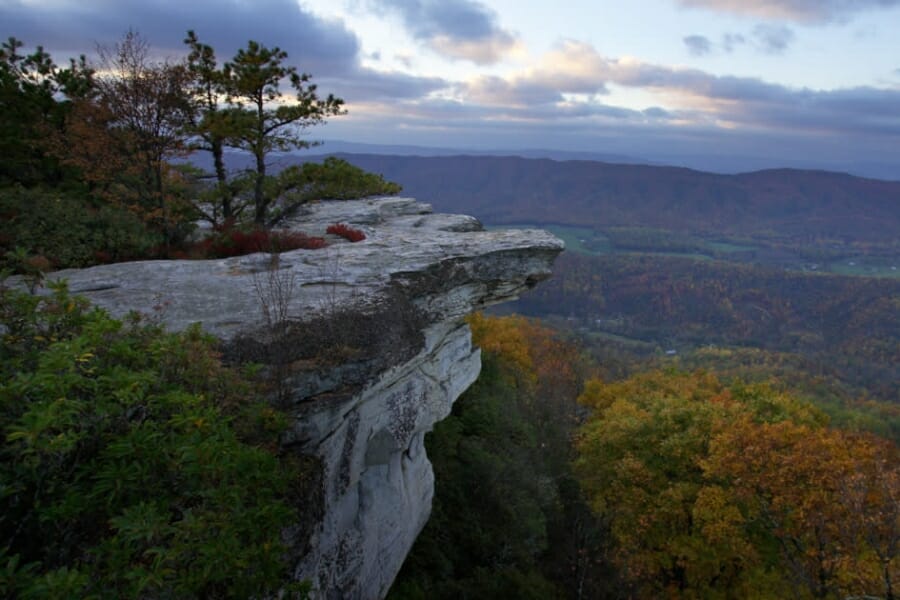
The Catawba Valley is an exciting place with a lot of geological history and beautiful natural scenery. This valley is in the Appalachian Mountains, and it is famous for the Paleozoic rock formations that have been there for hundreds of millions of years.
Fossil hunters can find out a lot about how life used to be on Earth by looking through these rock layers. The Catawba Valley is a window into the past. It has fossils of everything from marine invertebrates like brachiopods and trilobites to fossils of plants.
The area is suitable for finding fossils is the prevalence of sedimentary rocks like limestone and shale, which are known to preserve ancient organisms well. Over the years, erosion and natural processes have exposed these fossil-rich layers, making them accessible to anyone.
Where and what to find fossils at the Catawba Valley
Catawba Valley in Virginia is primarily known for its Paleozoic sedimentary rocks, likely to contain fossils from ancient marine environments. Brachiopods, Trilobites, Crinoids, and Corals are found here.
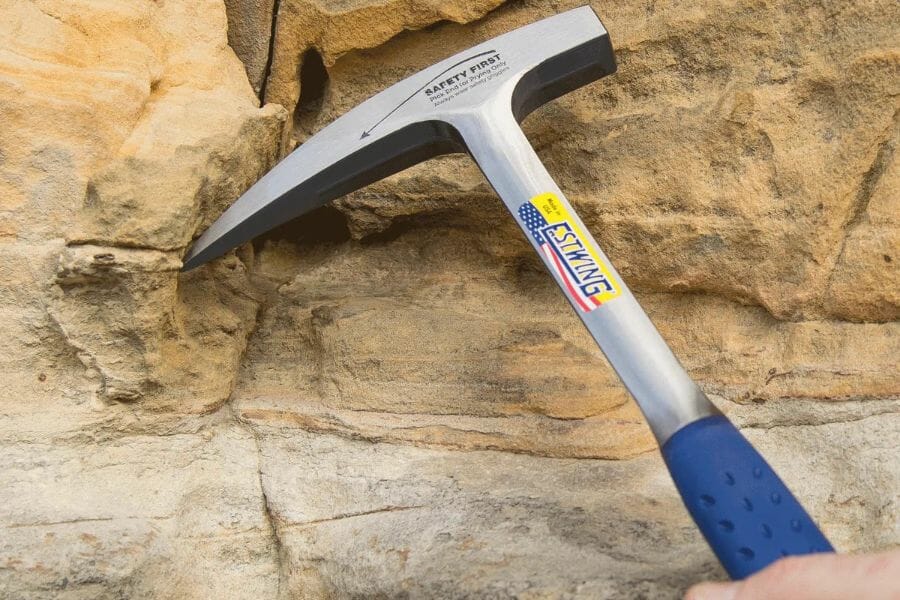
The tools every fossil hunter will need
When you're out looking for fossils having the right tools for the job is really going to make or break your success. You don't need a lot for most trips but there are a handful that are critical and will make your life a lot easier.
We get asked a lot about the equipment we use. Over the years we've found a handful of tools that we recommend to both new and experienced fossils hunters which we outline in great detail in our complete rockhounding tools and kit guide. These are quality options that also happen to be relatively inexpensive.
Below are the basic tools that make your life so much easier and save you a ton of time. Check out the full guide to see everything we recommend bringing. One quick note, as an Amazon Associate I earn from qualifying purchases but we try very hard to only recommend gear we would use ourselves and often recommend brands you can't find on Amazon.
At a minimum you should have:
1 - Sturdy rock hammer: The Estwing Rock Pick is our standard
2 - Rugged chisels: Try Kendo' 3-piece Chisel Set
3 - Compact shovel: The Koleiya 28-inch shovel works well
4 - Rock screen pan: The Wazakura Soil Sieve Set fits the bill
5 - Eye protection: DeWalt Safety Glasses are cheap and comfortable
6 - Head protection: Malta's Safety Helmet has been our go-to
7 - Jewelers lens with at least 20x magnification: Jarlink's Jewelers Loop is perfect
The fossil-finding books that we use most
There are also a few books that have been extremely helpful in the search for gems. These books have great recommendations and tips:
National Audubon Society Field Guide to Rocks and Minerals: North America
Southeast Treasure Hunter's Gem & Mineral Guide
Earth Treasures: The Southeastern Quadrant
We provide links to find these tools on Amazon but some can also be found at your local hardware stores. For more recommendations check out the link to our full tool guide above.
George Washington & Jefferson National Forest
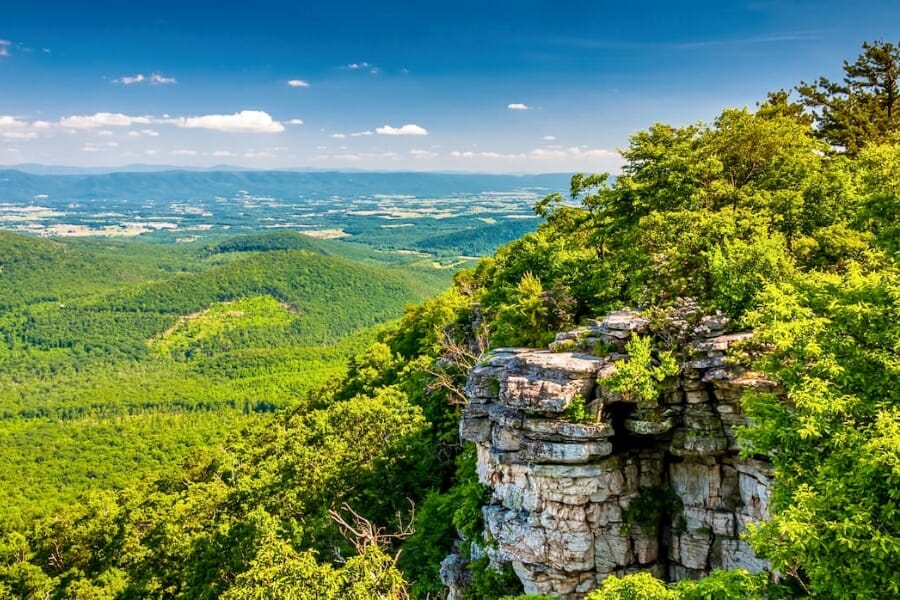
The George Washington and Jefferson National Forests cover a large area with a lot of different kinds of land. They are in Virginia but some of them also reach into West Virginia and Kentucky.
This huge natural area, which is about 1.8 million acres, is a treasure trove for people who love being outside. You can go hiking, camping, fishing, or watch birds. But one of its well-known things to do is to look for fossils.
The rock layers here date back to the Paleozoic Era, hundreds of millions of years ago, when this area was covered by ancient seas. These seas left behind sedimentary rocks like limestone and shale, which are excellent at preserving ancient life forms.
Where and what to find fossils at the George Washington and Jefferson National Forest
Marine fossils like trilobites, brachiopods, and crinoids, as well as the occasional plant fossil from a later time, can be found in the George Washington and Jefferson National Forests.
Hogue Creek
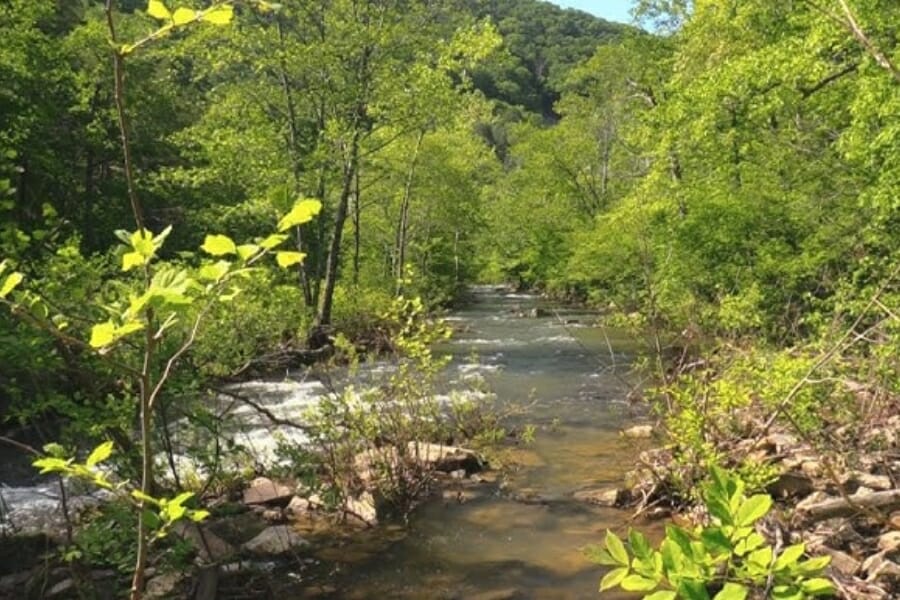
Hogue Creek flows through sedimentary rock layers that have been exposed by water erosion over time. This makes it a great place to look for fossils.
The Paleozoic Era shale and limestone that make up most of the rock layers in this area give us a glimpse into ancient marine environments that lived hundreds of millions of years ago.
The creek is easy to get to, and the sedimentary rocks aren’t too hard, so it’s easier for amateur fossil hunters to dig and sort through the layers to find these ancient treasures.
Where and what to find fossils at Hogue Creek
The types of fossils you can find at Hogue Creek predominantly include marine invertebrates like trilobites and brachiopods. These ancient organisms once thrived in the seas that covered this area and are now preserved in the rock layers lining the creek.
Occasionally, you might even stumble upon fossilized plant material or the remnants of ancient corals, which add to the diversity of finds at this location.
James River
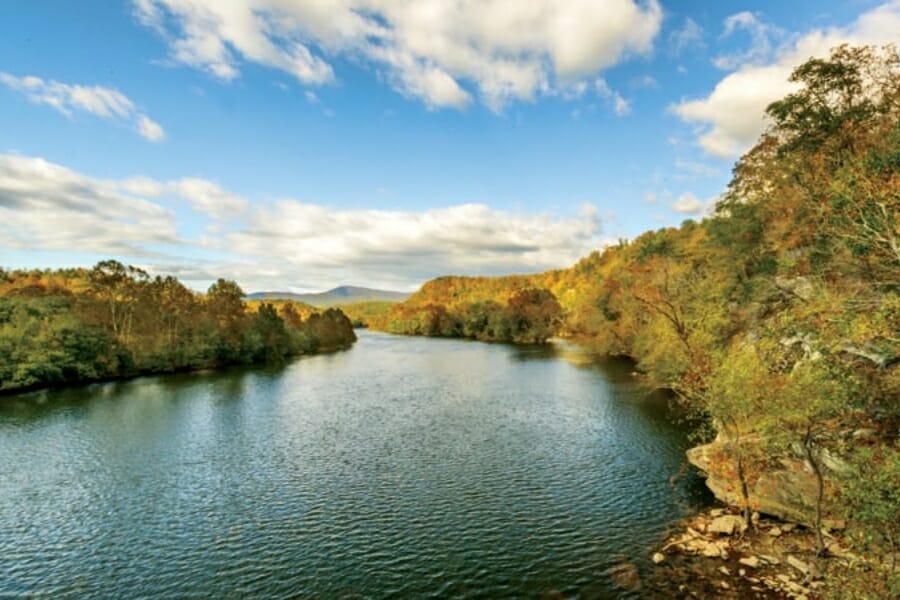
The James River is one of the most important waterways in Virginia. Along its beautiful banks, you can go kayaking, fishing, or hiking. But if you’re interested in the past, you’ll be happy to hear that the James River is also a great place to look for fossils.
The river flows through many different types of rocks, some of which are hundreds of millions of years old. This shows a rich tapestry of Earth’s history. It’s particularly good for finding fossils because of its extensive exposure of sedimentary rocks, which are the go-to spots for fossil enthusiasts.
Because the river is always moving, new fossils are always being exposed. This makes it more likely that you will find something interesting.
Where and what to find fossils at James River
The banks and shallows of the river often contain fossilized marine life such as shells, crinoids, and even shark teeth, particularly from the Miocene Epoch. You may also stumble upon more rare finds like bone fragments from ancient marine mammals.
Mint Springs
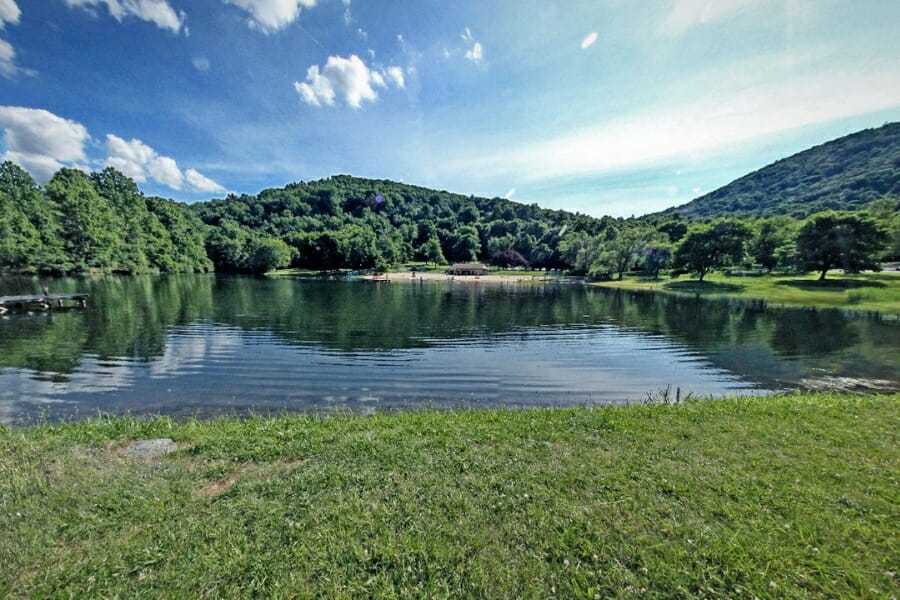
Mint Springs is a beautiful recreation area in Albemarle County. It’s known for its green landscapes, calm lake, and opportunities for hiking and fishing. Even though the area is a popular place for family trips and nature lovers, fossil hunters are especially drawn to it.
There are sedimentary rocks in the area that show fossils of life from millions of years ago. This makes it a great place for paleontologists to visit.
Each of these sedimentary layers is like a page in a history book. It tells a story about the past of the Earth. The site is a unique mix of fun and learning, giving visitors a real connection to the planet’s ancient past.
Where and what to find fossils at Mint Springs
The types of fossils you can discover at Mint Springs mainly include marine invertebrates like brachiopods, trilobites, and occasionally crinoids. These fossils are typically found in the shale and limestone rock formations that are exposed in various parts of the park.
Other Top Places To Find Virginia Fossils By Region
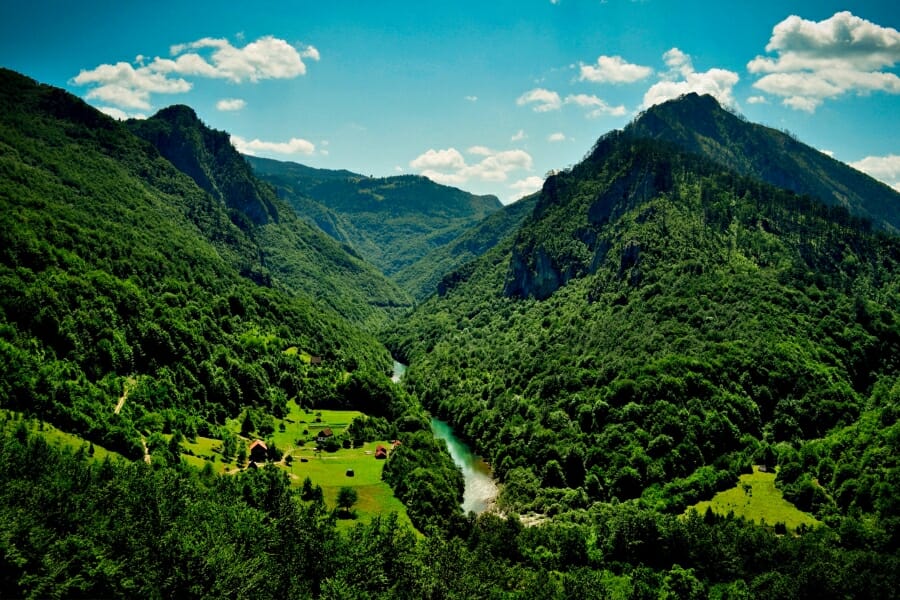
We’ll talk about other great places to look for fossils after sharing with you the best places to find fossils in Virginia. We’ve put together a list of these areas to help you out.
| Location | Fossils |
| Covington area, southwest of Island Ford, Alleghany County | Spirifer, Rensselaeria, Favosites, Crinoid fragments, Gypidula, Stromatopora, Cladopora, others |
| Tomahawk creek, Old Hundred Road, Chesterfield County | Vertebrate teeth – Lissodus |
| Manakin area, Boscobel Quarry , Goochland County | Fossils |
| Hampton area, Harris Creek Road, Hampton County | Mollusks |
| Rice’s Fossil Pit, Highland County | Vertebrates, phytosaurs, Rutiodon |
| Mogarts Beach, south bank of James River along base of cliffs and in ravines, Isle of Wright County | Mollusks, Corals, Cirripedes, Echinoids, Shark teeth |
| Wharf on James River, James City County | Forams, Pectens, Pholas |
| Blacksburg area, Thomas Farm, Roanoke County | Arthrorhachis, Eoharpes, Ampyx, Nileus, Bronteopsis, Homotelus |
| Mason Creek, Fort Lewis Mountain and Green Ridge, Roanoke County | Spirifer, Chonetes, Ambocoelia, Sphenotus, Crinoid steps, Plants |
| Lexington area, Whistle Creek, Rockbridge County | Typical faunas |
| Gate city, in area exposures of Rye Cove, Scott County | Brachiopods, Sponges, Algae, Corals, Cystoids, Crinoids, Bryozoa, Gastropods, Cephalopods, Trilobites |
| Gate city, Marcem quarry, Scott County | Typical faunas |
| Strasburg area, Passage Creek Gap, Shenandoah County | Microfossils, Plant Fossils (Earliest known terrestrial plants) |
| Strasburg area, in slopes of Green Mountain, Shenandoah County | Microfossils, Plant Fossils (Earliest known terrestrial plants) |
| Marlboro Point, along beach at mouth of Potomac Creek, Stafford County | Odontapsis, Otodus, Myliobatis, Crocodile teeth, Turritella mortoni |
| Saltville Flats area, well-preserved fossils, Smyth County | Invertebrate fossils |
| Mount Pleasant area, below mouth of Sunken Meadow Creek, Surry County | Ecphoras |
| Hayters Gap area, shale exposures, Washington County | Pyritized fossils |
| Mendota area, roadcut in valley of Little Wolf Run, Washington County | Crinoid calyces |
| Along York River, York County | Yorktown fossils |
| Yorktown area, mouth of Indian Field Creek, York County | Mollusks, Bones |
| Yorktown area, Zook’s fossil pit, York County | Mollusks |
Common Questions About Fossil Hunting In Virginia
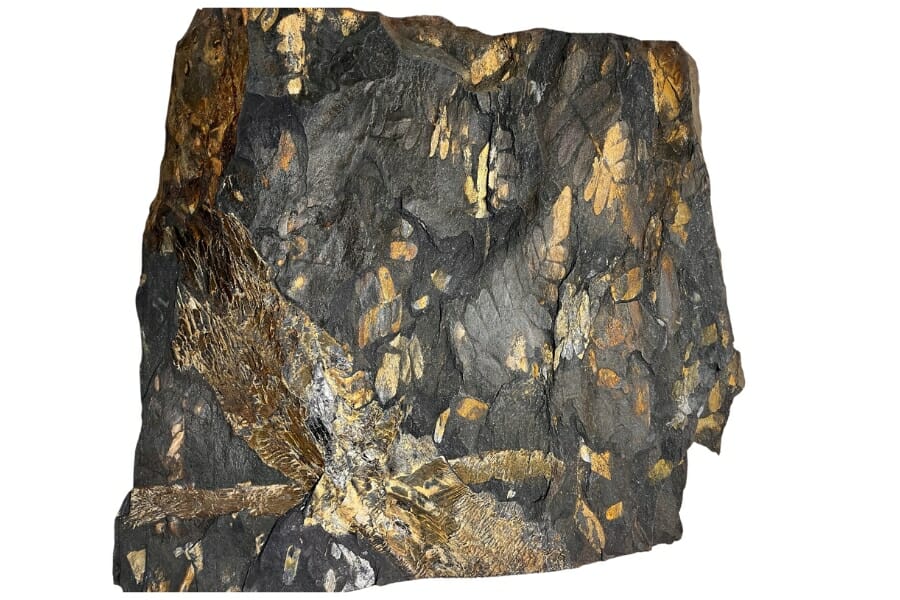
When people go to Virginia to look for fossils, they often ask questions like these. It’s important to know the answers.
Can you find megalodon teeth or shark teeth in Virginia?
Yes, you can find shark teeth in Virginia, even those from prehistoric sharks like the Megalodon. These fossils are often found on the banks of rivers and creeks that flow into the Chesapeake Bay, like the Potomac and York rivers.
The Megalodon was a huge shark that lived between 2.6 million and 23 million years ago. It could grow to be at least 60 feet long. Because Megalodons were so big, their teeth could be quite long, sometimes measuring up to several inches.
Is it illegal to collect fossils in Virginia?
The legality of fossil collecting in Virginia varies depending on the location and the type of land ownership. Collecting fossils on private land requires explicit permission from the landowner. Without permission, removing fossils is illegal.
Fossil collecting may be allowed in some state parks and public lands but is often subject to restrictions and may require a permit. Always check with park authorities and observe any regulations.
National parks, forests, and other federally managed lands often have stringent rules against removing any natural or cultural resources, including fossils. Collecting without a permit in these areas can be illegal and result in fines or other penalties.
For general information, you may check the updated guidelines for collecting in the state of Virginia.
Can you find dinosaur bones in Virginia?
Finding dinosaur bones in Virginia is relatively rare compared to other types of fossils like marine invertebrates or plant material. Virginia was largely covered by water during the periods when dinosaurs roamed the Earth, making it more conducive to the preservation of marine life rather than terrestrial dinosaurs.
The sedimentary rock in Virginia is often from periods either before or after the time of the dinosaurs, meaning that dinosaur fossils are less likely to be found.
Our Favorite Places To Buy Fossils In Virginia

You can go to one of our rock shops in the state if you don’t want to do the dirty work and spend hours looking for these old treasures. Here are some rock shops you can check out:
- The Crystal Case Rock Shop – Located inside of The Barrett Street Antique Mall 2645 Dean Dr Dealer, 2645 Dean Dr #901, Virginia Beach, VA 23452, United States
- Earth Addictions – 125 Mill St Suite 11, Occoquan Historic District, VA 22125, United States
- Minerals & Mystics – 345 Hillsdale Dr, Charlottesville, VA 22901, United States
- Odyssey Gem and Float – 927 Valley Ave, Winchester, VA 22601, United States
- Stone Goddess Rock Shop – 206 Chesterfield Ave, Colonial Heights, VA 23834, United States
- VaRockShop – 190 Rockfish School Ln, Afton, VA 22920, United States

